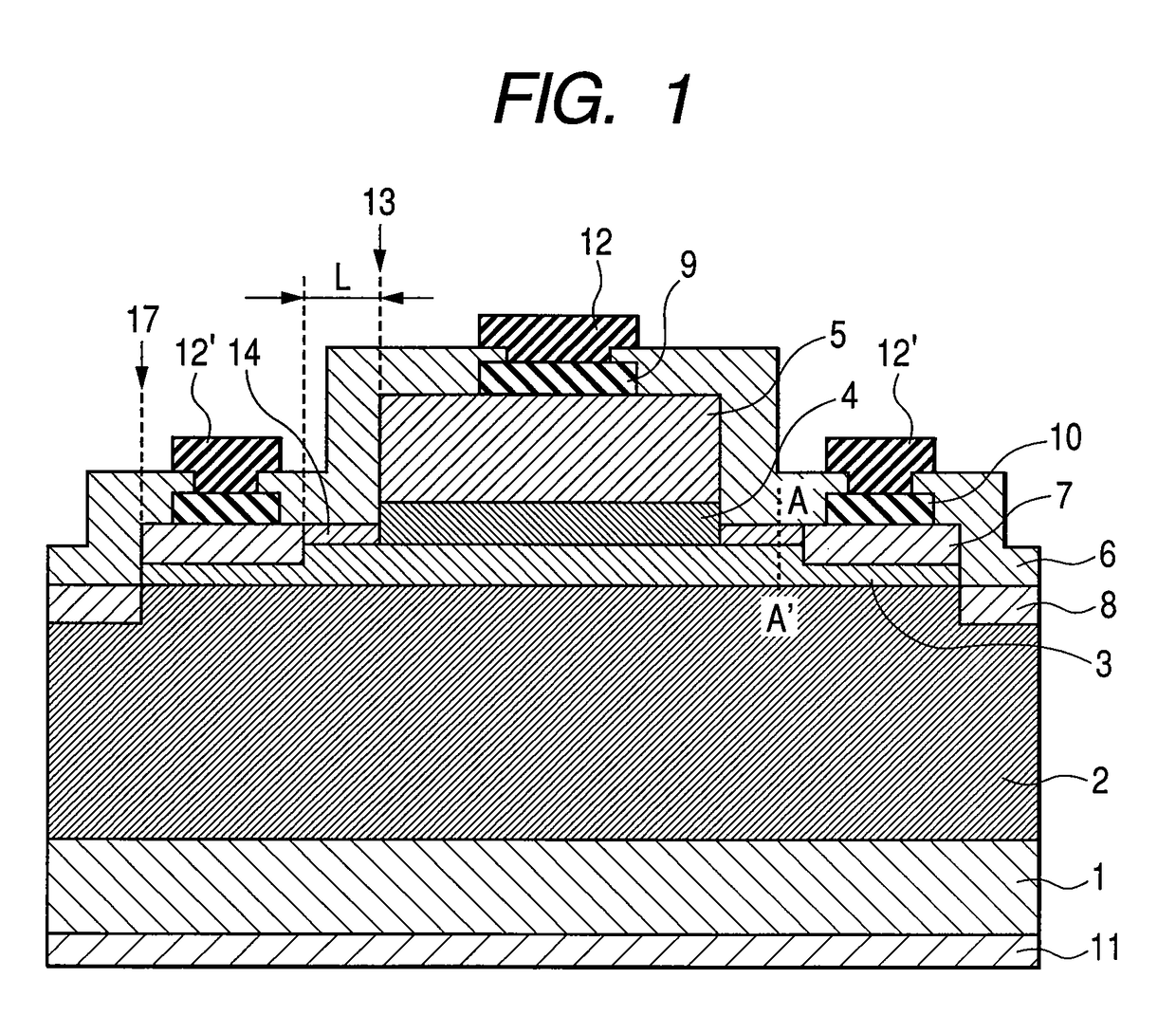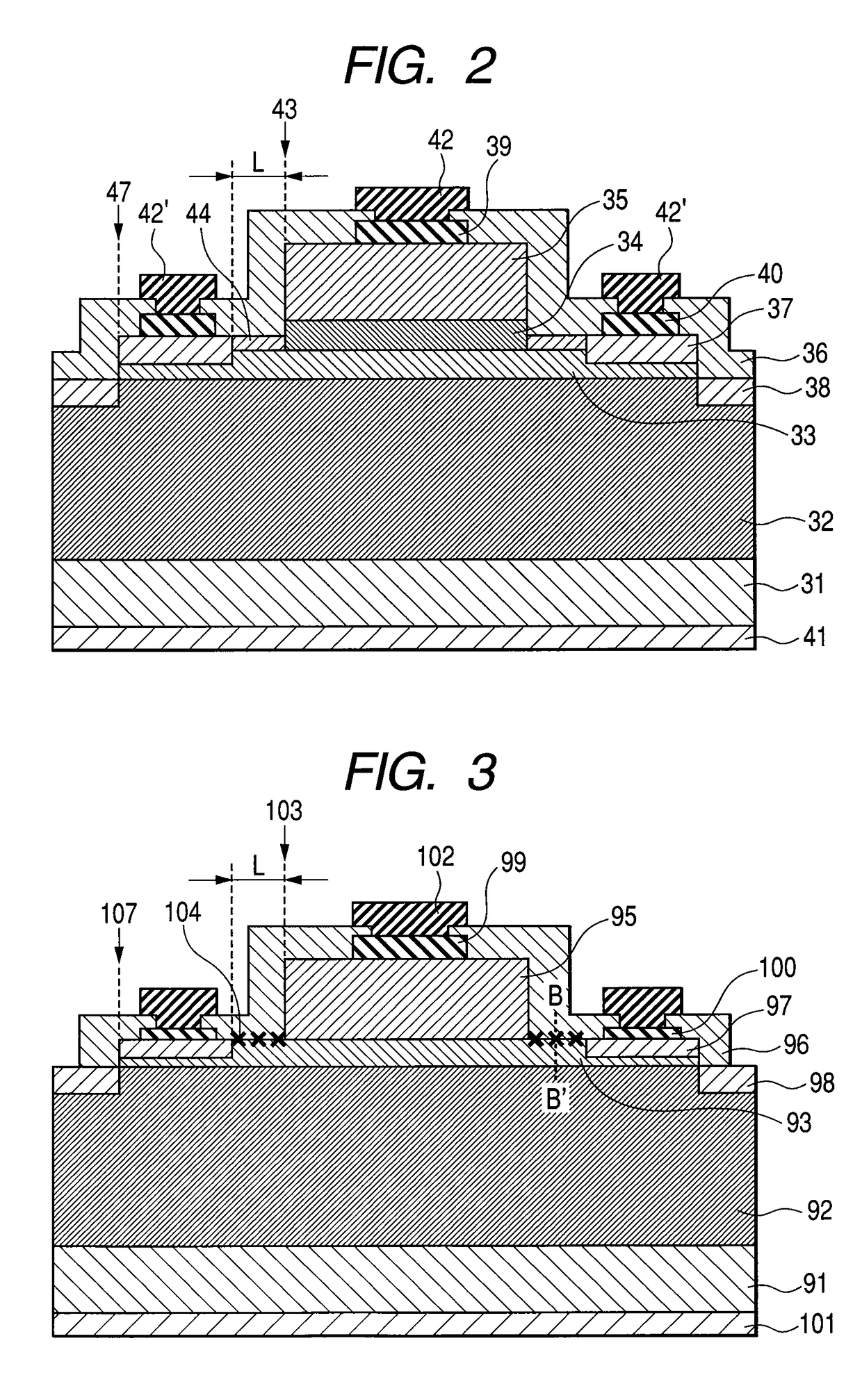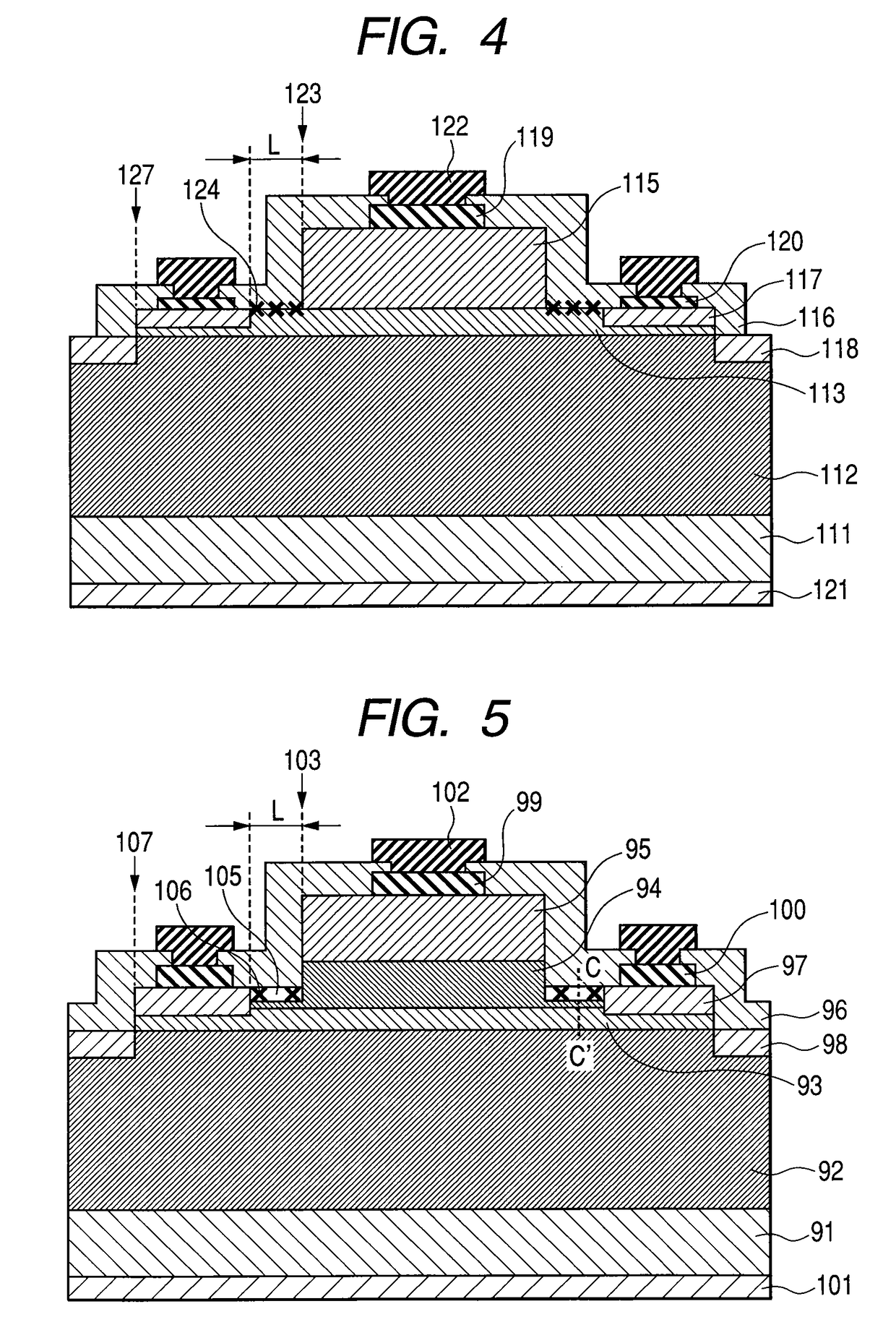Bipolar device and fabrication method thereof
a bipolar device and fabrication method technology, applied in the direction of basic electric elements, semiconductor devices, electrical apparatus, etc., can solve the problems of difficulty in improving the switching frequency, and inability to ensure the required current gain 35 for practical use, etc., to achieve good reproducibility and controllability, reduce the size and increase the frequency, and achieve sufficient current gain
- Summary
- Abstract
- Description
- Claims
- Application Information
AI Technical Summary
Benefits of technology
Problems solved by technology
Method used
Image
Examples
embodiment 1
[0081]An npn type SiC bipolar transistor as a first embodiment of the invention and fabrication steps thereof are to be described with reference to FIG. 1, FIG. 7 to FIG. 11, and FIG. 23.
[0082]FIG. 1 is a vertical cross sectional structural view of an npn-type SiC bipolar transistor as a first embodiment of the invention, and FIG. 23 is a plan view thereof. Reference numerals are used in common with both of the drawings. Above an n-type SiC substrate 1 ((0001) Si surface, donor (N) density of 3×1018 cm−3), a collector layer 2 comprising an n-type SiC (15 μm thickness, donor (N) density: 2×1016 cm−3), a base layer 3 comprising a p-type SiC (1 μm thickness, acceptor (Al) density: 2×1017 cm−3), a first emitter layer 4 comprising an n-type SiC (100 nm thickness, donor (N) density: 3×1017 cm−3), and a second emitter layer 5 comprising an n-type SiC (1 μm thickness, donor (N) density: 1×1019 cm−3). Then, the second emitter layer 5, the first emitter layer 4 and the base layer 3 form a mes...
embodiment 2
[0093]An SiC thyristor and fabrication steps thereof as a second embodiment of the invention are to be described with reference to FIG. 2 and FIG. 12 to FIG. 16.
[0094]FIG. 2 is a vertical cross sectional vertical view of an SiC thyristor as a second embodiment of the invention. Above an n-type SiC substrate ((0001) Si surface, donor (N) density: 3×1018 cm−3) 31, a drift layer 32 comprising a p-type SiC (100 μm thickness, acceptor (Al) density; 2×1014 cm−3) layer, a gate layer 33 comprising an n-type SiC (1 μm thickness, donor (N) density: 2×1017 cm−3), a first anode layer 34 comprising a p-type SiC (100 nm thickness, acceptor (Al) density: 3×1017 cm−3), and a second anode layer 35 comprising a p-type SiC (1 μm thickness, acceptor (Al) density 1×1019 cm−3) are formed. Then, the second anode layer 35, the first anode layer 34, and the gate layer 33 form a mesa structure 43. Further, as the ohmic electrodes, an anode electrode (Ti / Al) 39 is formed directly to the second anode layer 35,...
embodiment 3
[0105]An npn-type SiC bipolar transistor and fabrication steps thereof as a third embodiment of the invention are to be described with reference to FIG. 17 to FIG. 23 and FIG. 29.
[0106]FIG. 22 is a vertical cross sectional structural view of an npn-type SiC bipolar transistor as a third embodiment of the invention, FIG. 23 is a plan view thereof, and FIG. 29 is a schematic band diagram at D-D′ section in FIG. 22. Above an n-type SiC substrate 51 ((0001) Si surface, donor (N) density: 3×1018 cm−3), a collector layer 52 comprising an n-type SiC layer (15 μm thickness, donor (N) density: 2×1016 cm−3), a base layer 53 comprising a p-type SiC (1 μm thickness, acceptor (Al) density: 2×1017 cm−3), a first emitter layer 54 comprising an n-type SiC (thickness: 100 nm, donor (N) density: 3×1017 cm−3), a second emitter layer 55 comprising an n-type SiC (15 nm thickness, donor (N) density: 1×1019 cm−3), a hole barrier layer 63 comprising HfO2 (1 nm thickness), a conduction band discontinuity re...
PUM
 Login to View More
Login to View More Abstract
Description
Claims
Application Information
 Login to View More
Login to View More - R&D
- Intellectual Property
- Life Sciences
- Materials
- Tech Scout
- Unparalleled Data Quality
- Higher Quality Content
- 60% Fewer Hallucinations
Browse by: Latest US Patents, China's latest patents, Technical Efficacy Thesaurus, Application Domain, Technology Topic, Popular Technical Reports.
© 2025 PatSnap. All rights reserved.Legal|Privacy policy|Modern Slavery Act Transparency Statement|Sitemap|About US| Contact US: help@patsnap.com



